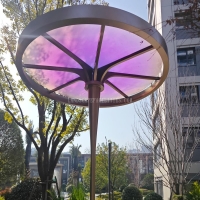Welcome to the website for landscape facilities products and knowledge.
What is the process for retrofitting older bins with new features or upgrades?
Retrofitting older bins with new features or upgrades is a cost-effective and sustainable way to modernize waste management systems. Whether you're looking to add smart sensors, improve durability, or enhance recycling capabilities, the process involves several key steps.
1. Assessment and Planning: Begin by evaluating the condition of existing bins. Identify which features need upgrading, such as adding IoT sensors for fill-level monitoring or installing compartments for better waste segregation.
2. Selecting Upgrades: Choose the right upgrades based on your needs. Popular options include solar-powered compactors, RFID tags for user identification, or antimicrobial coatings for hygiene.
3. Installation: Work with professionals or follow manufacturer guidelines to install new components. Ensure compatibility with the existing bin structure to avoid functional issues.
4. Testing and Calibration: After installation, test the new features to ensure they work seamlessly. Calibrate sensors or mechanisms for optimal performance.
5. Maintenance: Regularly inspect and maintain retrofitted bins to prolong their lifespan and ensure continued efficiency.
By retrofitting older bins, communities and businesses can reduce waste, lower costs, and contribute to a greener future without replacing entire systems. This approach aligns with circular economy principles, making it a smart choice for sustainable waste management.
Related search:

Recommendation
Metal frame with gradient color acrylic combined with high-end shading landscape facilities